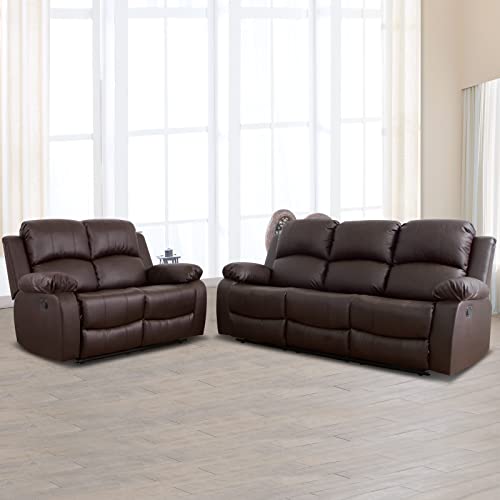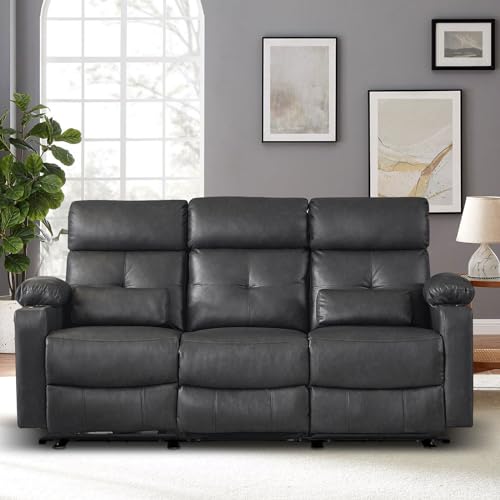10 Things You Learned In Kindergarden That'll Help You With Genuine Le…
페이지 정보
작성자 Evelyn 작성일 24-10-31 06:19 조회 2 댓글 0본문
 How to Spot a Genuine Leather Sofa
How to Spot a Genuine Leather SofaWith a buttery-soft leather upholstery this sofa looks fantastic in any space. People love its simple design and high-quality, genuine leather upholstery.
Untrained eyes may have difficulty discerning the difference between genuine and faux leather. Here are six suggestions to help you differentiate between the two: 1. The rough edges.
1. Labels are crucial
Genuine leather has a distinctive style and feel that's difficult to replicate. It is also durable, easy to clean, and doesn't absorb excessive body oils. This makes it a great choice for people suffering from allergies. Not all leather sofas are made equally. Some retailers are even recognized for presenting PVC as genuine leather.
To help you avoid getting scammed, it's essential to understand the different types of leather. This includes determining full grain and top-grain leather, as well as assessing the quality material of the upholstery. Do not be afraid to ask discerning retailers for this information.
To determine if you have a genuine leather sofa, you must first examine the label. The label should clearly state the type of leather used to cover the sofa, and any other materials such a fabric or cotton. Reputable suppliers must also have clear guidelines regarding exchange or return in the event that you aren't satisfied with your purchase.
If the sofa doesn't come with a label, you can still confirm its authenticity by looking at the upholstery's fabric backing or by opening the cushion casing. You can also check the texture of the leather to see if there are any bumps or blemishes. These are indicators that the leather is fake or is bonded.
You can also test the quality of the sofa by touching its surface. Genuine leather will have a smooth and soft texture, while faux leather or bonded leather will be rougher and feel more like suede. Additionally, you should be able to feel the difference between the bumps and wrinkles of genuine leather and the patterns printed on faux leather.
While a genuine leather sofa may cost more than a imitation counterpart, it's an investment that will last longer and will often end up as family heirlooms through the years. You can reduce the damage that's caused by the sun, ozone, heat and humidity by putting your leather sofa in an airy, dark space away from fireplaces, heaters and air cooling units. Leather protection creams can also be used to keep your leather sofa sturdy and soft.
2. Look at the back
If the label does not identify the type of leather is present in the sofa, it is essential to examine it close. The scent, the texture and the backing will be clear indicators of authenticity.
Genuine leather will not feel smooth when you touch it. This is because animal hides come with a variety of pores that allow it to breathe. A leather product that is completely smooth may be fake rustic leather sofa.
Check for bumps or uneven surfaces. The process of making genuine leather requires buffing, which takes away some of the rough outer skin. If the material covering your sofa is top grain leather, there'll still be some bumps.
You can also test the leather by running your fingers over it and pressing down into it. If the leather is real, it will stretch and wrinkle just like human skin. This means that it's capable of breathing, which means that the leather does not become dry and crack over time.
Faux leather is printed and has a uniform pattern however genuine leather has natural imperfections that add to its beauty and durability. This includes creases and scratches. Genuine leather is soft and a bit stiff when it's new. However, it shouldn't crack or dry out when you treat it regularly by applying a leather protection cream.
To cut costs, some furniture manufacturers make use of a mix of synthetic and real leather to create their furniture. The 'contact' areas, such as seats and armrests as well as backs, are constructed of genuine leather, while the non-contact parts like the outside and base arms are upholstered with a less-expensive polyurethane or leather-like synthetic fabric. Even if the couch is labeled as genuine leather, you should take a close look at the backing to determine if it is genuine leather.
Labels and prices can point you in the right direction, but to ensure that a sofa is genuine leather it's essential to meet up close and personal with it. Look at the back of the sofa for polyurethane which is a sign that it's not genuine leather.
3. Take a look at the seat
A genuine leather sofa's seat is also a good indicator of quality. While many faux leather couches leather use different materials for the upholstery Genuine leather has a unique texture that feels smooth to the touch, but isn't completely uniform in color and shade. Be aware of bumps under the surface and a strong, natural scent. These are the characteristics that distinguish genuine leather from fakes or low-grade leather.
If the leather is stitched in a continuous, large piece, it's a obvious sign. This is typical with faux leather but if it's on genuine top-grain leather it is best to stay clear of the sofa.
Pricing and labels may give you a hint however the only way to know for sure is to get up close to the furniture. Real leather should not be perfect and not feel uneven. It will also have rough edges and fat wrinkles beneath the surface. The softness of genuine leather is different from synthetic materials, and the temperature of the furniture will reveal whether or not it's made with authentic materials.
Leather sofas are a staple of interior design and for good reason. They're stylish durable, long-lasting and durable. It is also easy to clean and resistant to spills of liquid. This makes it a perfect option for families with children or pets. The best part about genuine leather it's that it's a timeless style that won't go out of style and is still available at a range of prices.
If you're looking for a classic leather sofa that can last for a long time, think about the Pottery Barn Turner. The two-seater is quite expensive, but it is made with top-grain leather that will last for a lifetime. It's an excellent choice for those with small leather corner sofa spaces, too, since it's available in three sizes and is compact enough to fit in the majority of rooms.
If you're looking for something bit more modern, you should consider this All Modern Geo Genuine Leather Sofa. This sofa is a mid-century modern-inspired design with an elegant, angular frame and asymmetrical pillows that blend form and function. While the frame is crafted out of composite, plywood and plastic, the sofa has genuine leather in the seating area which is a upgrade from Ikea's faux leather couch - https://maps.google.Ml,, which was awarded the CHOICE's "Shonky" award in the year 2015.
4. Look at the smell
Genuine leather has a distinctive smell that is a natural organic skin scent that cannot be duplicated. If the sofa that you're considering buying has a strong artificial smell it's not real. This is usually caused by the chemicals that were used to treat leather. These chemicals can remain on furniture long after it's been constructed.
You can determine the quality of leather by running your fingers along the surface. Real leather will feel rough and show bumps and lumps, just like human skin. If it is smooth and cold, it is most likely faux or made of bonded leather.
You can also open one of the cushions to look at the backing. Faux and bonded leather will have some form of polyurethane backing to help support the manufactured upholstery, while genuine leather has an untreated back that resembles in appearance to coarse suede. If you notice a woven backing, this is a dead giveaway that the sofa isn't real leather.
Peter says that the best way to tell whether a sofa is genuine is to gently run your fingernails over the surface. The grit of the leather should make your fingers a little dull, and the surface will stretch and wrinkle a little. It will also feel warm to the contact.
Turning the sofa on its back and checking the upholstery will also tell you if it is genuine. Genuine leather is a continuous piece of leather, not a plastic-coated faux or the bonded leather.
 When deciding on the grade of your leather sofa, consider the amount of use it will get and how long you want it to last. The more you utilize a sofa in a given time, the more it'll need to be taken care of. Peter suggests regular, gentle cleaning with a leather conditioner. This will help keep the leather's suppleness intact and stop it from drying out and becoming hard.
When deciding on the grade of your leather sofa, consider the amount of use it will get and how long you want it to last. The more you utilize a sofa in a given time, the more it'll need to be taken care of. Peter suggests regular, gentle cleaning with a leather conditioner. This will help keep the leather's suppleness intact and stop it from drying out and becoming hard.- 이전글 Responsible For The Audi Key Programming Budget? 10 Very Bad Ways To Invest Your Money
- 다음글 13 Things About Audi Key Programming You May Not Know
댓글목록 0
등록된 댓글이 없습니다.

